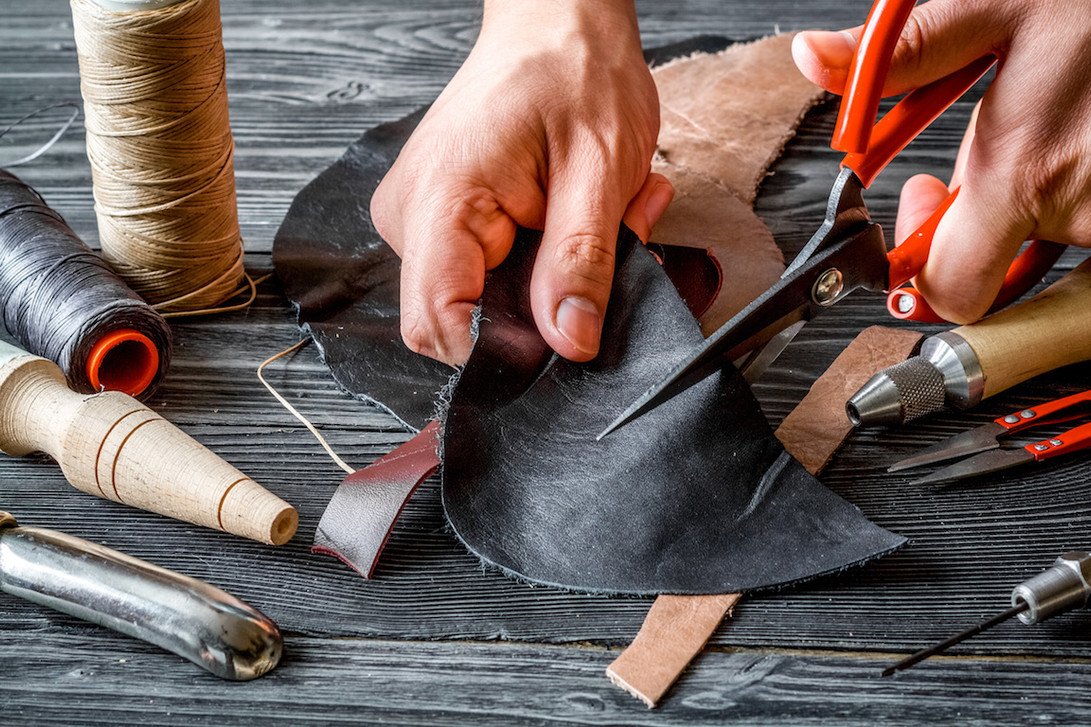Leatherworking is a rewarding activity that gives crafters a chance to grow in skill and experience. Some projects may be made from a simple leather kit in which much of the more difficult tasks are already completed. As crafters attain more leather working skills, the projects can become much more complicated. However, whether you are a novice working on a straightforward leather craft or an expert leatherworker designing a complex creation, safety is essential. The individual skills required in leathercrafting can be quite dangerous if proper care is not taken. Here are some general safety tips for leather workers.
Put on Protective Clothing
The first step you can take to protect yourself is to put on clothing that will protect you from any unexpected incidents. Wear protective eyewear, especially when punching or stamping leather. Steel-toed shoes are helpful since some of the machinery used for leather work are quite heavy. Finally, a thick apron will protect your body from any stray material.
Use Care When Cutting
When cutting leather, utensils need to be sharp to handle thick leather. Sharp utensils will not only cut leather, but can also injure the delicate skin on your hands. Always cut in the direction away from your body and grasp shears, scissors, and knives at the handle and pointing away from you.
Keep Fingers Away from Machinery
Fingers are vital for many crafts but can sometimes get in the way. Take special care when working with machinery to keep your fingers out of the path of the components. When using awls, punchers, edgers, and bevelers, leave a space of at least one inch between your fingers and the tool. Leather sewing machines can be heavy-duty and those needles demand your healthy respect as well.
Ventilate Your Workshop
Some leather projects will use various chemical solutions to achieve certain styles or additions. Among the chemicals that leather workers use include leather dyes as well as rubber and contact cement. Contact cement is very powerful stuff and its fumes can be toxic. At a minimum, your work area should be well-ventilated when working with chemicals. Using a respirator offers greater protection from toxic fumes.
Clean Up When You’re Done
Finally, when you finish your leathercrafting work, you should clean up your workspace and put all leather crafting tools and supplies away. Not only does this get your work area ready for the next time you’re ready to craft, it also keeps these tools from causing damage. An awl or knife or punch left where it shouldn’t be can readily injure an unaware foot, hand, or viritually any body part. Cleaning up also avoids the risk of a child finding these tools and mistaking them for toys.
Whether you’ve been crafting for many years or just started last week, keep yourself and others safe by following these commonsense tips. Visit the StecksStore.com site for the tools, materials, kits, and patterns you need for your next leather project.

